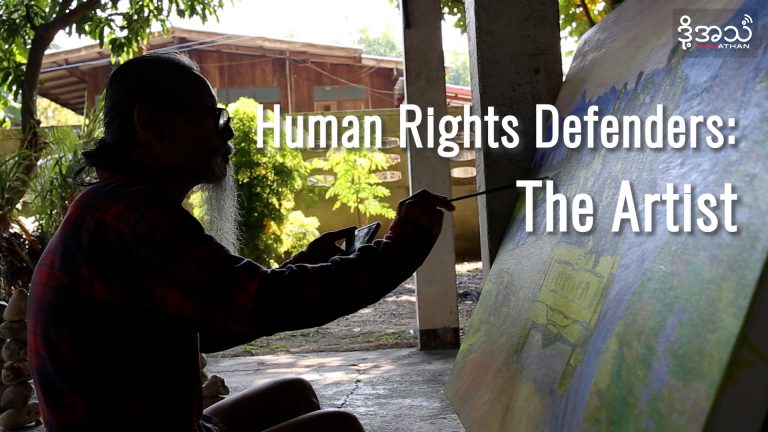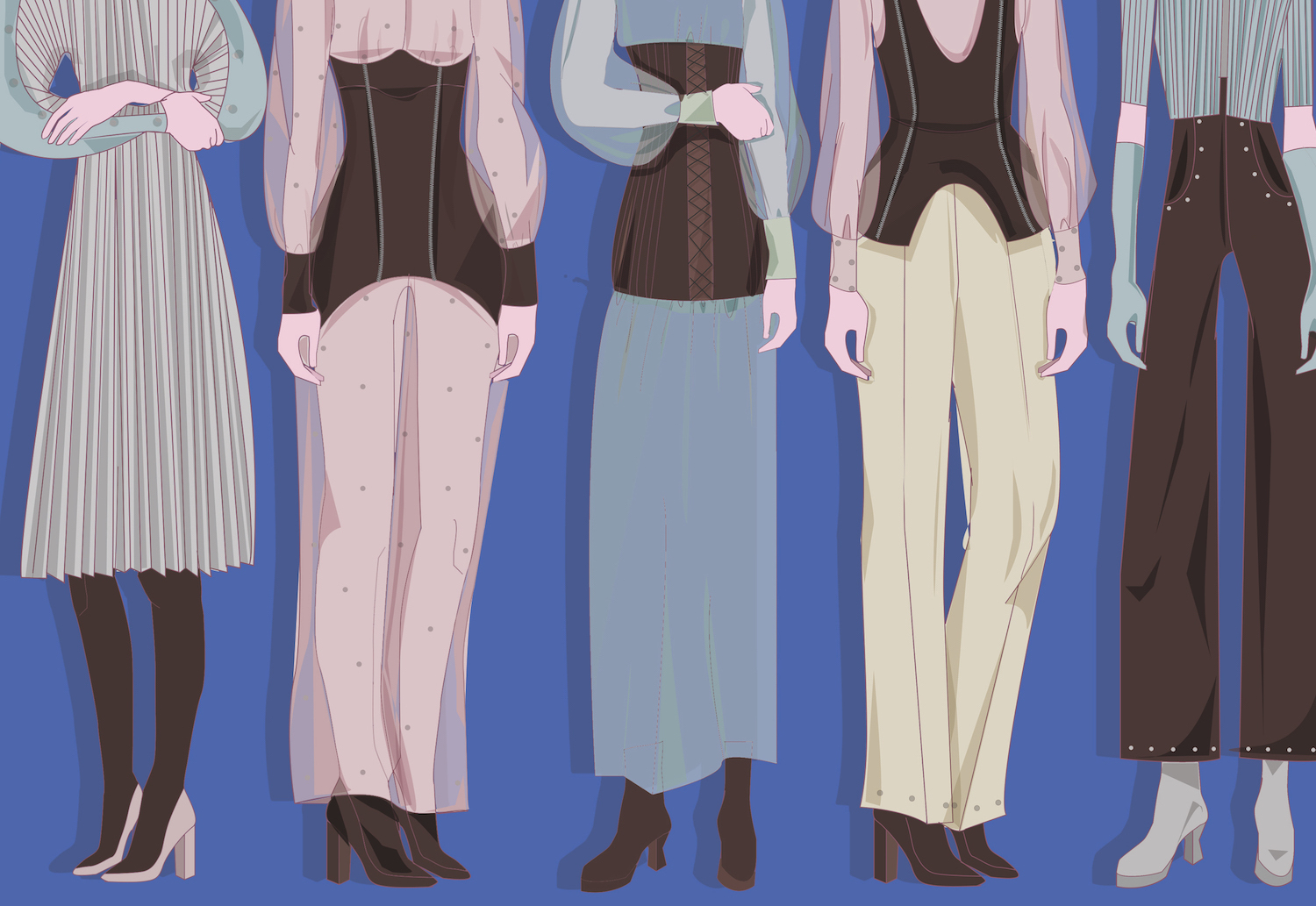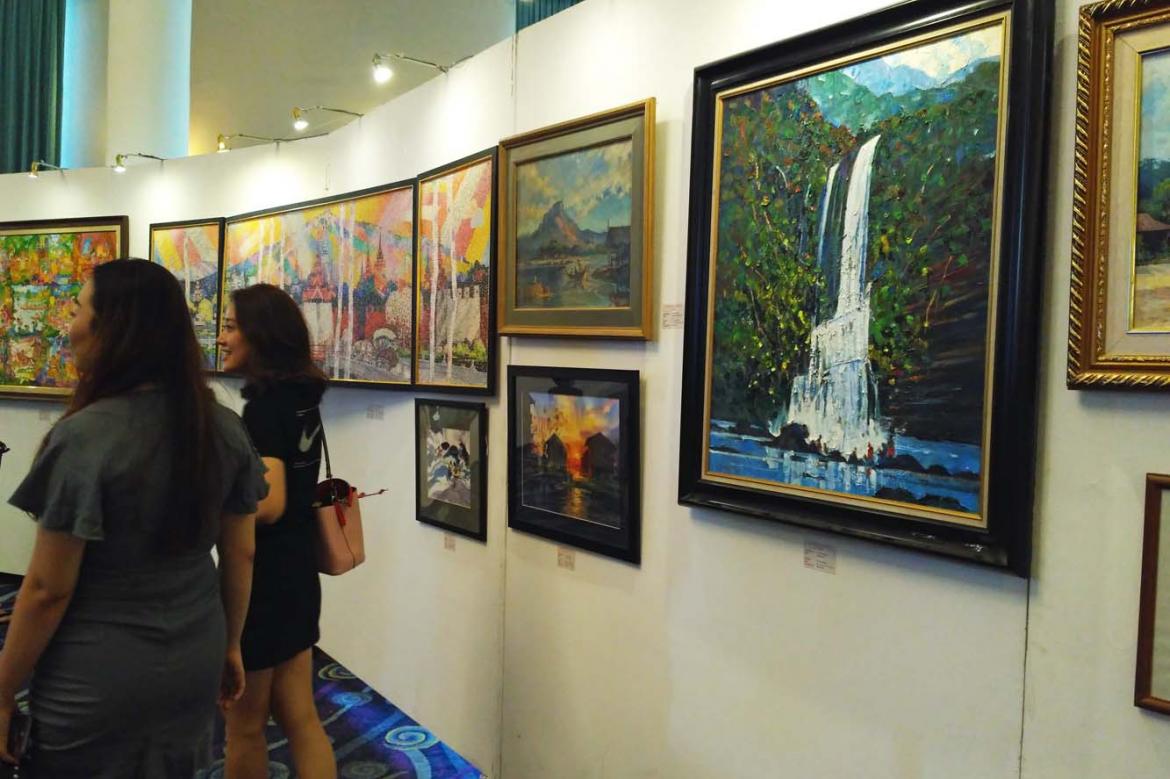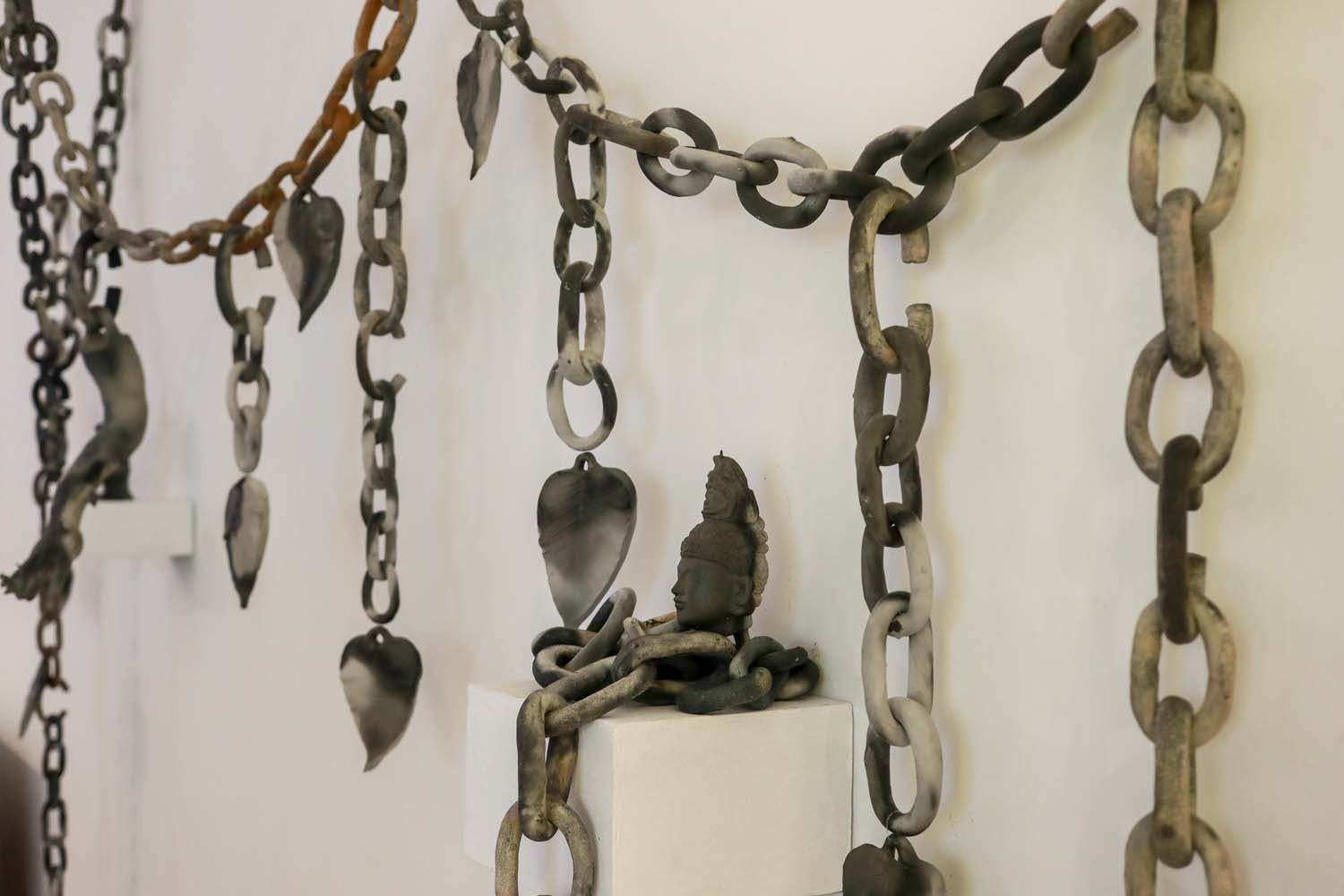U Sein Tun, a snake charmer, was walking through a field near Meiktila in Mandalay Region about 10 years ago when a cobra emerged from the grass and bit him on the hand.
“It was the most painful thing I have experienced,” said U Sein Tun, who has survived 22 snake bites, only two of which resulted in him being hospitalised.
“I collapsed and within a few minutes had gone blind,” he said. “It was the tattoos that saved me.”
U Sein Tun’s shoulders have intricate but fading images of a King Cobra (Ophiophagus Hannah), the world’s longest venomous snake, and his arms and torso are covered with Buddha images and protective verses from Buddhist texts, as well as different depictions of snakes.
They were applied with a traditional technique that has been used for centuries in Myanmar but is gradually disappearing.
Support more independent journalism like this. Sign up to be a Frontier member.
The instrument used is a bronze rod, about two feet (60 centimetres) long, which has three sections. The top is usually weighted with a carved figure, often a bird or nat, and is attached to a solid middle section. It is linked to the bottom stick, the ‘picker’, which holds the ink and penetrates the skin when tapped by a small mallet.
The process is so painful – particularly on the inside of the thigh and on knee joints – that those being tattooed in the past were anaesthetised with opium.
All of the ink in U Sein Tun’s tattoos had a vial of snake venom added to them, and
traditional chants were sung during the tattooing – much like the Sak Yant yantra tattoos in Thailand. The tattoos and the traditional chants, he believes, prevent him from dying if he is bitten by a snake.
tattoo-art-2.jpg

Lauren DeCicca / Frontier
Tattooing has existed in Myanmar for hundreds of years and is it believed the tradition was passed from China to the Shan before spreading to other parts of the country. Shan women were once said to shun men whose legs were not entirely covered with tattoos.
Sir James Scott, writing in the late 19th century under the pseudonym Shway Yoe, said that all Burmese men were tattooed, except for “a few puny Rangoonites,” who are ashamed of their “weakness”.
In rural areas, he wrote, no man would be without tattoos and “they would as soon think of wearing a woman’s skirt as of omitting to be tattooed”.
During British rule, tattoos were banned. Saya San, who led a series of uprisings against the colonialists between 1930 and 1932, told his followers that he was protected from the British guns by his tattoos and charms carved on his body.
The previous military government was also sensitive about tattoos if it thought they were being used for political reasons. In 2007, rapper G-Tone was banned from performing for six months after lifting his shirt on stage and revealing a tattoo showing a pair of hands clasped together in the traditional Buddhist greeting for monks. The junta believed he was showing solidarity with the monk-led protest movement known as the Saffron Revolution that had been suppressed a few weeks earlier.
Although the traditional form of tattooing persists, most are now applied for aesthetic rather than spiritual reasons using a machine, said Ko Aung Soe Oo, who owns the ASO Tattoo Studio in Yangon’s Hlaing Township.
Ko Aung Soe Oo has learned the traditional method of applying tattoos – sometimes known as the bamboo technique because it can involve using sharpened slivers of bamboo – but said nearly all of his customers prefer machines.
He said there is a small group of traditional tattooists who travel the country, applying tattoos the traditional way, but their numbers are declining.
“For me, tattoos are a form of aesthetic expression, something nice to look at, but for the traditional tattooists it is more about the spiritual side and it takes much longer. You couldn’t just approach them and ask for a tattoo, the process takes time,” he said.
Ko Aung Soe Oo said the use of machines was overtaking the traditional method in rural areas.
“A trend tends to start in the city centre and spreads out to the rest of the country,” he said.
“So we are seeing more and more people who want these sorts of designs,” he said, pointing to a colourful fish in what’s known as the ‘Yakuza’ style decorating his right shoulder. He had it applied after seeing the same design on a musician.
Ko Aung Soe Oo’s small studio is neat and tidy and he respects the importance of hygiene. Needles are discarded after use and his equipment is stored safely and out of sight. Many of the nation’s tattoo artists work in the open, including at festivals, and use their needles on more than one customer, increasing the risk of spreading diseases such as HIV, tuberculosis and hepatitis B and C.
Ko Aung Soe Oo said he believed tattooists who took risks were aware of what they were doing, but either did not change needles because they wanted to save time or could not a ord to buy more needles.
“I also think the people getting the tattoos are aware of the risks, but they either don’t care or are too drunk at festivals to think of the consequences,” he said.







